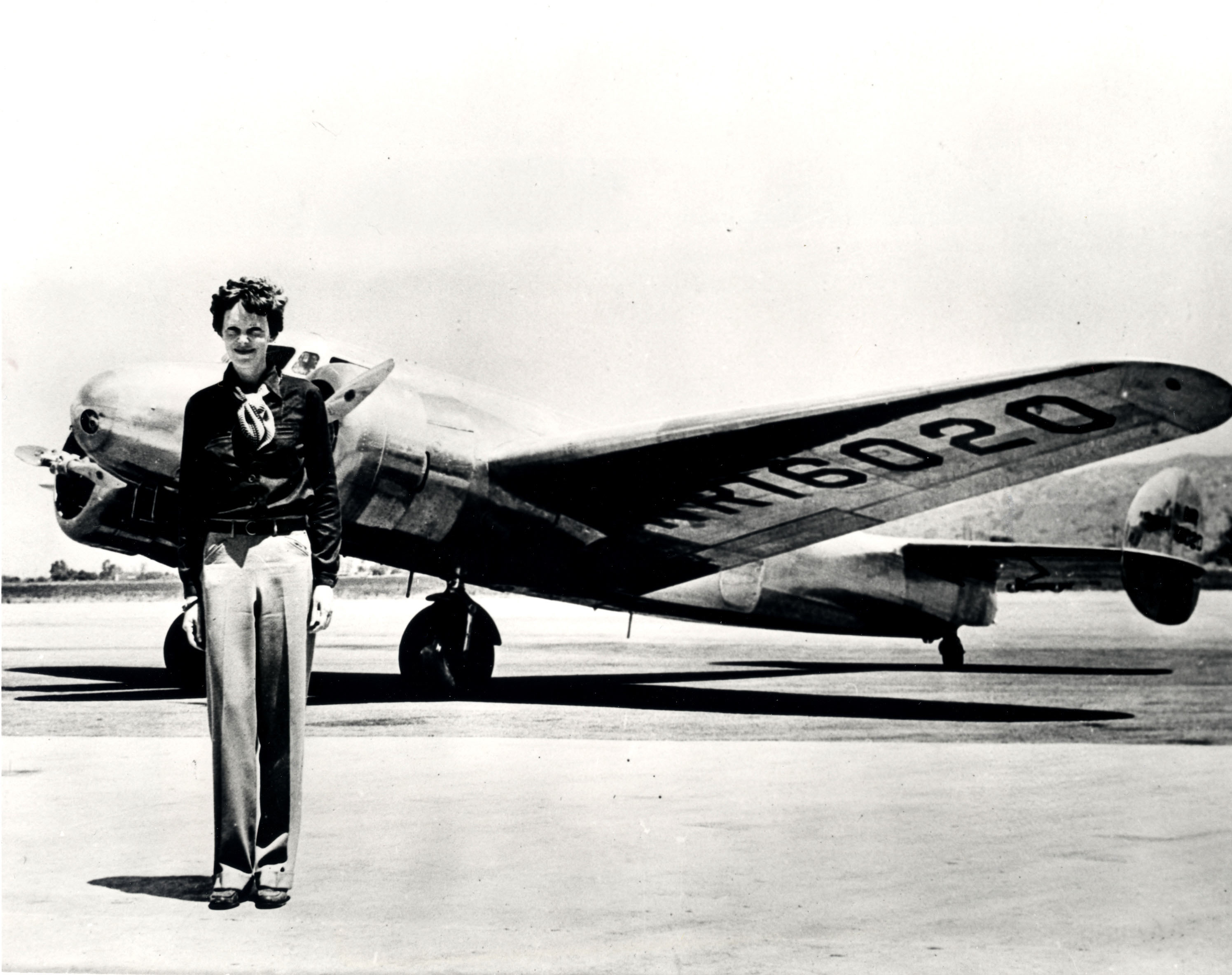Our enduring obsession with Amelia Earhart's mysterious disappearance
Why we can't get enough of the tantalizing tale of the famed aviator's demise


Since 1937, humans have done a lot of amazing things: We put a man on the moon, developed the atomic bomb, eradicated smallpox, invented computers, created the internet, cloned animals, transplanted hearts, erected 160-story skyscrapers, perfected the smartphone, and modernized everything from medicine to transportation to warfare.
But one thing no one on Earth — despite many, many attempts — has been able to do is determine what exactly happened to famed aviator Amelia Earhart and navigator Fred Noonan on July 2, 1937, when Earhart's Lockheed Electra went down near Howland Island in the Pacific Ocean. The moment her last transmission was received by the U.S. Coast Guard cutter Itasca was the beginning of one of the greatest unsolved mysteries of the 20th century.
What is it about Earhart that keeps people interested 80 years after her disappearance? Why does she continue to command attention, leaving us riveted when someone steps forward with what they claim is definitive proof of her ultimate fate? We are as obsessed with the case in 2017 as people were in 1937, and for good reason — there are so many tantalizing theories about her disappearance, each one juicier than the last, that we can't help wondering and guessing what happened.
The Week
Escape your echo chamber. Get the facts behind the news, plus analysis from multiple perspectives.

Sign up for The Week's Free Newsletters
From our morning news briefing to a weekly Good News Newsletter, get the best of The Week delivered directly to your inbox.
From our morning news briefing to a weekly Good News Newsletter, get the best of The Week delivered directly to your inbox.
We ask questions because we want answers, and when we're unable to explain her disappearance and have absolutely no physical evidence to work with — not an airplane wing, not a radio instrument, not even a tattered piece of clothing— we're left with no choice but to use our imaginations.
Think back to when Earhart went missing, just a few years before World War II began; to say this was an intense time would be an understatement. She was famous for being the first woman to fly solo across the Atlantic Ocean, and her much-publicized effort to circumnavigate the globe garnered worldwide attention. Her case had everything a good mystery should: danger, intrigue, urgency, an unfamiliar setting, celebrity. Everyone wanted to know what happened to this daring woman, and as the search continued, so did the speculation.
The most boring theory is also the most likely: that the Electra, running out of fuel and off course, crash landed into the Pacific Ocean and sank, its remains now thousands of feet under the sea. There's also the theory that Earhart wasn't able to land on Howland but did manage to make it to another island, Gardner Island, where Earhart and Noonan met their demise after weeks without food and fresh water. A more sinister theory is that the Electra crashed on Saipan, then under Japanese occupation, and Earhart and Noonan were captured and accused of being American spies. On an episode of Unsolved Mysteries in the early 1990s, several women were interviewed who said they watched as Earhart and Noonan were executed on the island; no evidence was ever found to show Earhart and Noonan landed on Saipan, let alone were killed there.
The theories only get more bizarre. One suggests Earhart somehow survived the crash landing on her plane, was captured by the Japanese, and became one of the many women to voice propaganda as Tokyo Rose (her husband, George Putnam, listened to hours of broadcasts, and never heard Earhart's voice). My personal favorite is that she survived a crash landing, but for some reason thought, "You know what? When I get home, instead of continuing to live my life as beloved aviator Amelia Earhart, I am going to become New Jersey banker Irene Bolam." This theory that Earhart secretly returned to the United States and was living as Bolam was presented in a 1970 book, and an irate Bolam sued the author and publisher for $1.5 million. Bolam died in 1982, adamant that she was who she said she was (and that was not Amelia Earhart), and experts agreed that this was a completely far-fetched idea.
A free daily email with the biggest news stories of the day – and the best features from TheWeek.com
On Sunday, the History Channel aired the latest special on Earhart, called Amelia Earhart: The Lost Evidence. Researchers on the show claimed that a photograph, lost for years in the National Archives, shows Earhart and Noonan in the Marshall Islands, with the Japanese ship the Koshu Maru in the harbor; they believe the pair died while being held prisoner on Saipan. Before the program even aired, it was discredited by several people, including Ric Gillespie of the International Group for Historic Aircraft Recovery, who thinks his four border collies will be able to sniff out the remains of Earhart and Noonan on Gardner Island, and Clive Irving, who wrote on The Daily Beast that no one on the Koshu Maru ever spoke of seeing Earhart, and on July 3, the day after Earhart vanished, the ship was 1,500 miles away from the Marshall Islands.
One thing we can all agree on is even if Earhart managed to survive a crash landing, she is no longer living — her 120th birthday is on July 24, so it's highly unlikely that she is still out there somewhere all alone, either chuckling to herself over how long she's fooled everyone or wondering when she's finally going to be found. Although if she is, congratulations on setting yet another record, this time as the Oldest Living Aviator to Make People Think She Crashed in the Pacific and Vanished Without a Trace But Really Has Been Eating Coconuts on a Remote Island This Whole Time.
The first time I heard about Amelia Earhart was when I was six years old, and while her disappearance is what hooked me, finding out about the records she set and barriers she broke are what made her one of my heroes. As fascinating as it is to discuss the theories about her final flight, both plausible and outlandish, it's just as important to remember everything Earhart accomplished before she became perhaps the most famous missing person of the 20th century. Let's never forget her spirit of adventure, or the drive to do the impossible that got her into the Electra so many summers ago, flying high above the Pacific, her sights set on breaking another record.
Catherine Garcia has worked as a senior writer at The Week since 2014. Her writing and reporting have appeared in Entertainment Weekly, The New York Times, Wirecutter, NBC News and "The Book of Jezebel," among others. She's a graduate of the University of Redlands and the Columbia University Graduate School of Journalism.



